The Art of Creation: In a Whir of Wings
July 17, 2025 - The film, Every Little Thing, pays tribute both to a woman who rehabilitates hummingbirds and to the hummingbirds themselves. By Louise Conner
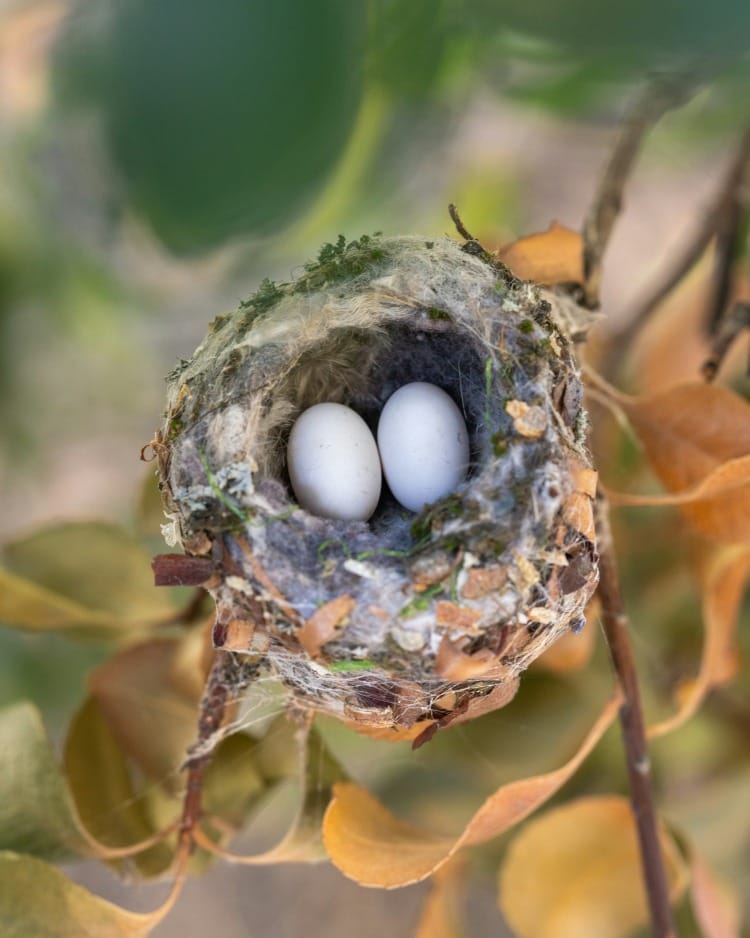
Hummingbirds are special for many reasons including their speed, their adroitness, and their size. They are found only in North and South America, with the majority of them native to Central and South America. It’s hard to imagine these three to five inch birds which weigh less than an ounce journeying 3900 miles across the troposphere twice a year, but some, such as the Rufous hummingbird, do just that. Many species find their way into Los Angeles each spring, which is the setting for the 2024 Australian film, Every Little Thing.
Written and directed by Sally Aitken, the movie centers on the work and voice of Terry Masear, a permitted wildlife rehabilitator who has worked to save and rehabilitate hummingbirds with Los Angeles Hummingbird Rescue for 21 years. (She now lives in Portland, Oregon, but continues the work through the LAHR helpline). The other stars of the film are Cactus, Sugar Baby, Jimmy, Raisin, Alexa, and many others—hummers who have been mauled by cat claws, hit by cars, made homeless and/or motherless, doused with sugar water (which dissolves feathers), or traumatized by other causes. The relationships between Masear and the birds she works unceasingly to save, are central in the film.
Running parallel and adding extra layering to the film are pieces of Masear's story and her own griefs and trauma. As she says, “You are ready made with the empathy. You don’t need to develop it. It’s already there because of your own struggle.” But she also finds that everyone is touched by a hummingbird trauma. “When you get a wounded or hurt hummingbird, it’s too much for people. They just feel like I’d be a monster not to help the creature.”
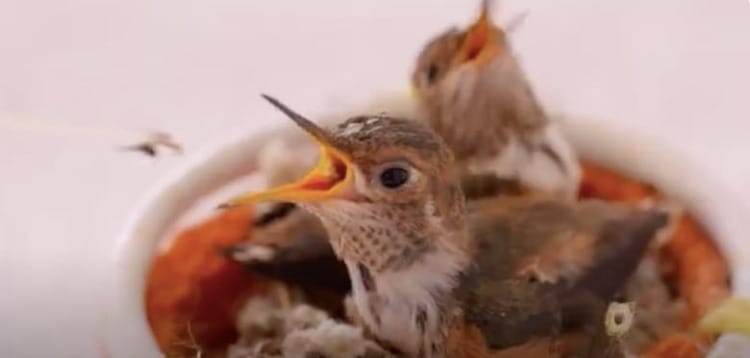
The movie details different and interesting aspects of the work of rehabilitating hummingbirds. Just keeping one fed is challenging, considering that hummingbirds have the highest metabolism of any vertebrate animal. A bird that "spins its wings 50 times per second" to hover, dive and turn with the speed a hummingbird depends upon a high metabolism.
Being able to fly, spin, and dodge is an absolute necessity for a hummingbird's survival, especially, since unlike most other birds, they can't walk. They only use their feet to perch and to push themselves off into flight. This means that a hummingbird with injured wings has no chance of survival. This explains the lengths Masear goes to in the film to help the birds not just merely fly, but fly like a hummingbird should. One of my favorite parts of the film is when she practices physical therapy (flight training) with a bird she calls Cactus. The emotional attachment Masear feels toward Cactus is visible as she challenges her to fly off of one perch and on to another by hovering and flying upward. The patience and ingenuity required and shown is impressive and beautiful.
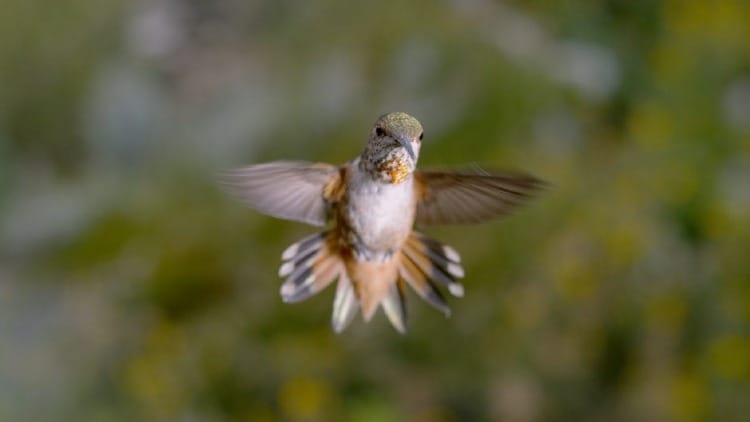
The photography of the film is lovely. Much of this is done with a very high frame rate so viewers see the adeptness and beauty of a hummingbird in flight. A lifelong hummingbird watcher, the film enables me to see details I haven't been able to catch before while watching a hummingbird fly. These video interludes elicit the awe shown by Masear toward these tiny creatures. The hummingbird's eye view draws viewers not only into Masear's point of view, but also into a bit of what these birds themselves experience.
Masear makes clear that for her, efforts to save and rehabilitate are opportunities for showing compassion. As she says, I never measure a rescue by the outcome, only by the compassion that went into saving the bird. Both in the film and in her book, Fastest Things on Wings, we see and hear stories of "finders" who do some crazy things to help a hummingbird in distress. Particularly in the book, you see the deep grief and pain that comes along with wildlife rehabilitation, how this kind of active love brings deep suffering as part of your voluntary sacrifice for the good of another creature.
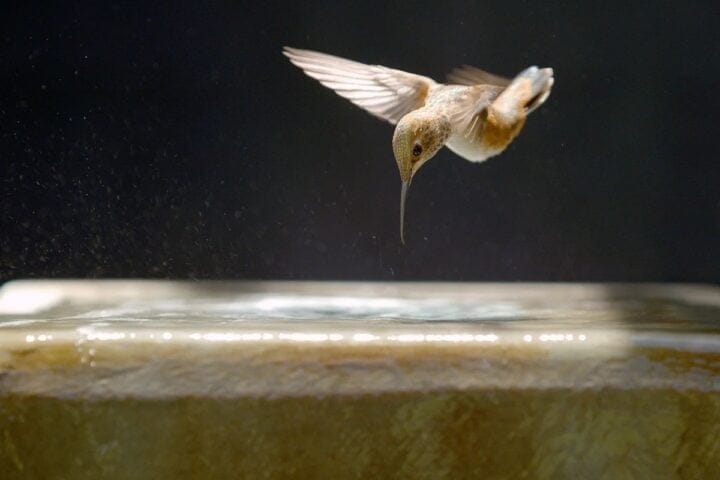
In addition to being a tribute to the work she does, the film is also a tribute to the creatures she helps. Masear absolutely delights in hummingbirds; her admiration for them and their special traits and abilities is evident throughout the film.
During one of her musings in the film, she comments, I don’t think we give other species nearly enough credit for the things that they understand and the things they can do that we can’t do. Humans always see themselves as superior because we have the higher brain. Things are not what they seem. You know they can see a flower from miles away, when they’re flying over a canyon, they can see a flower from a mile away so they have these perceptions we don’t have, so WHY are they so superior again? I want to know.
It amazes me when a hummingbird buzzes in from nowhere, hovers inches from my face, and shoots away in a millisecond after dismissing my pink hat as a source of its desired nectar. Enabled by its fourth color-sensitive eye cone (humans only have three) and its extraordinary flying ability, hummingbirds can accomplish things I can barely even manage to see before they are gone from my sight.
Why do humans consider our abilities to be the ones that matter most? Do we not believe or understand that God loves all of creation and gives each creature their own particular beauty and gifts? This film reminds us of this truth. Perhaps we need to think deeply about the possibility that the most important gift we have been given is this: the responsibility to show compassion and care toward the legions of extraordinary creatures who inhabit this earth along with us.
Every Little Thing is available on various streaming platforms.
Feel free to leave a comment below (you can sign in through your email) or contact me directly at louise.conner@circlewood.online.
Louise


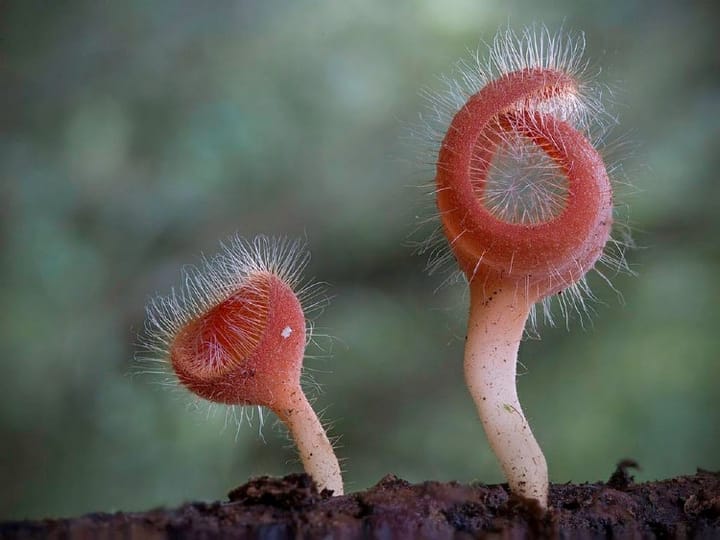
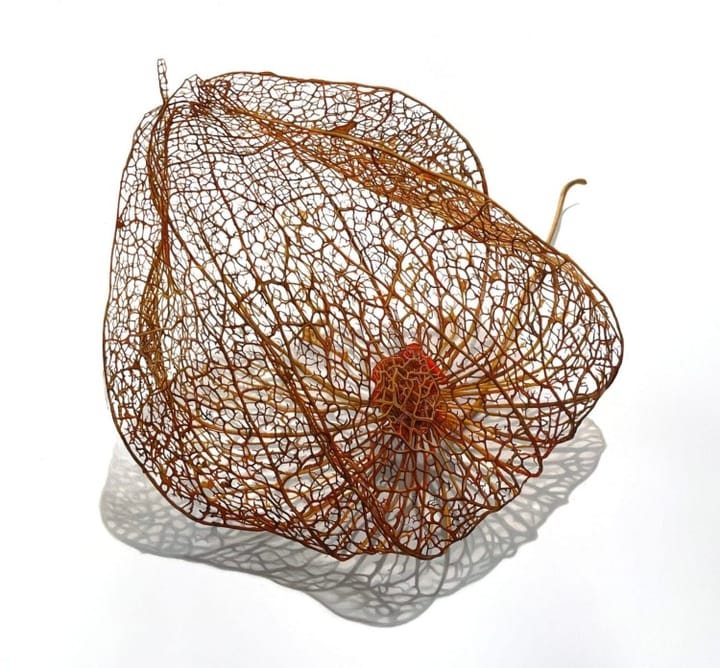
Comments ()